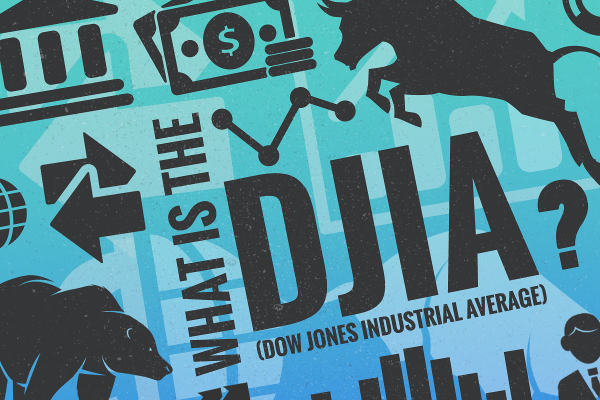
Has the Dow’s big tumble this week, sparked by renewed jitters over the U.S.-China trade fight, brought back not-so-distant memories of the market’s wild ride in late 2018?
Stay calm, keep the panic to a minimum and stick to your plan. That’s the only way to dodge the most common portfolio-busting blunders when stock market turbulence spikes.
It’s okay to admit this week’s 553-point drop in the Dow Jones industrial average has you fearing the worst. It’s also fine to acknowledge that the Dow’s nearly 300-point rebound Monday from its intraday low might have given you hope the worst of the market’s downdraft was over and Tuesday’s swoon only added to your confusion.
Sure, these are anxious times. The fears mostly have been triggered by President Trump’s threat over the weekend to hike tariffs on Chinese imports from 10% to 25%. Also lurking are worries of a slowdown in the U.S. and global economy and an eventual Federal Reserve rate hike. Angst – and uncertainty –come with the territory when you invest in stocks for long-term goals such as college tuition and a secure retirement.
The key to successful investing is avoiding critical mistakes that can derail your future plans.
Here are the most common, and costly, errors to avoid when the stock market gets rough:
Letting fear take hold
Not controlling your emotions can lead you to overreact to short-term market drops. You could do things you may regret later, such as dumping all your shares just before the market begins a rebound.
“The first instinct when stocks are causing you pain is to want to get rid of the pain. And a way to do that is to sell everything,” says Andrew Tapparo, president and founder of Tapparo Capital Management, a financial advisory and investment management firm in Middleton, Massachusetts. “But that’s not the smartest thing to do.”
Selling in a panic is not a financial strategy.
Thinking too short term
No doubt, it’s unnerving when the Dow plunges 473 points in a single day as it did Tuesday. But one bad day, or one bad week or even a longer period of bad days, in a market with a history of volatility is unlikely to knock your long-term goals off track.
“Don’t let the market’s ups and downs disrupt your long-term plan,” says Brad Bernstein, senior vice president of wealth management at UBS Financial in Philadelphia.
Taking a longer view drives home his point. The Dow is still up 11.3% for the year and the broad Standard & Poor’s 500 index is up 15%.
The broad market gauge has more than quadrupled since the bull market began back in March 2009 following the worst market downturn since the Great Depression.
Misjudging tolerance for losses
Too many people wait for a steep downdraft in stock prices to realize that the anguish of losing money, even if it’s only a loss on paper, is too much for them to handle. More often than not, the losses keep them up at night and often trigger an impulse to sell.
“Building a portfolio that lets you sleep at night is a big part of dealing with downside,” Tapparo says.
While people need to take some risk in their portfolios to amass enough savings over their lifetime, it’s better to build a portfolio that realistically takes into account how much money you can afford to lose without getting spooked out of the market at the wrong time, he adds.
A general rule is not to have any money riding on stocks that you need to tap quickly, as there’s always a risk prices will go into a free fall when you need the cash.
Missing out after bailing out
The big risk of getting out of the market when things get rocky is that it is unlikely you will get back in and participate in the market’s eventual rally.
“Timing the market is impossible,” UBS Financial’s Bernstein says. “Selling during a pullback is the most expensive mistake an investor can make. When the inevitable rebound occurs, they are not in the market and that is when the best returns tend to occur.”
Failing to rebalance portfolio
Investors who don’t regularly adjust their overall portfolios to reflect their desired amount of stocks and bonds can run into trouble when stocks turn south, says Ken Mahoney, CEO of Mahoney Asset Management in Chestnut Ridge, New York.
Let’s say you want a mix of 60 percent stocks and 40 percent bonds. You can inadvertently increase your risk when the stock market is rising sharply and let your stock winners ride. The reason? You end up with a far bigger holding of stocks than you planned on. If you regularly adjust your portfolio, say on a quarterly basis, to make sure those portfolio percentages stay level, you force yourself to buy low and sell high, Mahoney explains.
“When the market is soaring, you automatically siphon off some of the gains, and when it takes a big hit like 2008, you add to stocks,” he says. “That strategy takes away the emotion and activates investor discipline.”
Peeking at your account balance too often
To avoid spooking yourself, try to avoid peeking at your portfolio account balance on big down days, as the size of the loss could shake you even more. A better strategy is to view your quarterly statements when they arrive every three months.
Contributing: Paul Davidson
